
RECOMMENDED BOOKS, VIDEOS, DVD'S ABOUT MILITARY HISTORY
(updated July 21, 2023)
CLICK ON BOOK COVERS OR "READ MORE" TO ORDER ONLINE, UNLESS OTHERWISE SPECIFIED
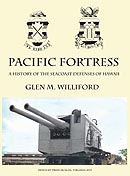
 PACIFIC FORTRESS: A HISTORY OF THE SEACOAST DEFENSES OF HAWAII
PACIFIC FORTRESS: A HISTORY OF THE SEACOAST DEFENSES OF HAWAII-
Glen M. Williford. Pacific Fortress, A History of the Seacoast Defenses of Hawaii is a revealing historical account of the U.S. Army's coastal defenses of Oahu. This work provides a thorough account of both the seacoast and anti-aircraft branches of the Coast Artillery Corps in this important American Pacific base. It presents a detailed chronicle of the building and operation of the defenses from shortly after the territory's occupation in 1907 through the tense pre-war period and the devastating Japanese attack on Pearl Harbor on December 7, 1941 to the impressive wartime enhancements. At its culmination in 1945, Oahu boasted the strongest coast defenses of any American harbor. Compiling research from the National Archives and many primary sources this work describes in great detail the defensive plans as well as the fortifications built between 1904 and 1945. Consequently, it is simultaneously a "unit" history (the Coast Defense units stationed in the islands), a weapon /technical history (the artillery in the fixed gun batteries) and a combat history. The text is supported with thorough referenced endnotes, a bibliography, and eleven appendices listing all fortification sites. This 450-page, hardcover book is heavily illustrated with over 460 maps, plans, and period photographs, this work is the most comprehensive coverage of these defenses ever offered in print. The author, Glen M. Williford, has contributed an important addition to the body of knowledge on these historical defenses. It is a worthy companion to the earlier publication,
Pacific Rampart, A History of Corregidor and the Harbor Defenses of Manila and Subic Bays by the same author and publishing team. Readers of both military and Hawaiian history will find this coverage fascinating.
[Read More]$45 for signed copy directly from the author
Glen Williford, 634 Silver Dawn Court, Zionsville, IN 46077
Glenwilliford@gmail.com 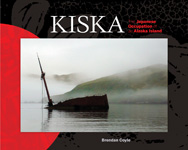 KISKA - THE JAPANESE OCCUPATION OF AN ALASKA ISLAND
KISKA - THE JAPANESE OCCUPATION OF AN ALASKA ISLAND-
Brendan Coyle. Alaska's windswept Aleutian Island chain arcs for over a thousand miles toward Asia from the Alaska Peninsula. In this remote and hostile archipelago is Kiska Island, an uninhabited sub-arctic speck in the tempestuous Bering Sea. Few have the opportunity even to visit this island, but in June of ...
[Read More] 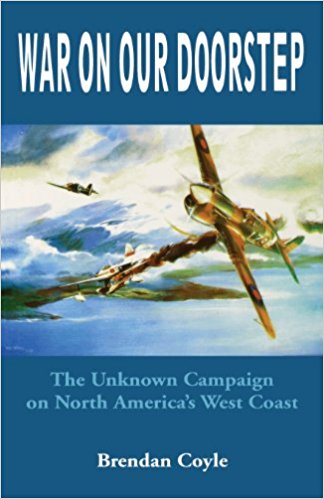 WAR ON OUR DOORSTEP: THE UNKNOWN CAMPAIGN ON NORTH AMERICA'S WEST COAST
WAR ON OUR DOORSTEP: THE UNKNOWN CAMPAIGN ON NORTH AMERICA'S WEST COAST-
Brendan Coyle.When Chief Gunner Hashiro Hayashi took dead aim on British Columbia's Estevan Point Lighthouse and wireless station on a June morning in 1942, the realities of war had come to North America. Sixty years later, the fascinating events of that era and their impact on both the Canadian and American psyches remain unknown to much of the world.After conducting ...
[Read More]  AMERICAN BREECHLOADING MOBILE ARTILLERY 1875-1953
AMERICAN BREECHLOADING MOBILE ARTILLERY 1875-1953An Illustrated Identification Guide -
Glen M. Williford with Thomas D. Batha
An illustrated identification guide to all the types of mobile field artillery (wheeled) adopted for service by US military forces (Army, Navy, Marine Corps) in the modern era. Covers the period from 1875 and the first breechloading, rifled guns through types adopted during the Korean War. Major types profiled are field and infantry artillery, mountain guns, siege artillery, anti-tank guns, and naval landing guns. Each type of gun is described in text, drawings, and photos. Included are the history of the type's development, major features, production, combat usage, and comments about surviving examples. It will prove to be a valuable reference guide to military historians, students of artillery technology, and
those caring for or collecting surviving examples. This book is the first comprehensive guide to American mobile artillery ever to be published.
Click here to download more information. 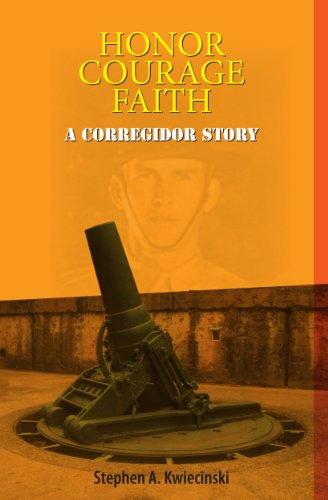 HONOR, COURAGE, FAITH: A CORREGIDOR STORY
HONOR, COURAGE, FAITH: A CORREGIDOR STORY by
Steve Kwiecinski9:10 am, Fort Mills, Corregidor Island, the guardian of Manila Harbor, "The Rock": We are pulling into the North Dock. To our left is the famous Malinta Hill and the "tail." To our right is the "head" with most of the batteries, including Battery Way. Right now, they are playing "The Stars and Stripes Forever." I am weeping. I can't help it. I can barely write this.
This is the story of a son tracing his father's footsteps and discovering a true and inspirational story of courage, faith, and patriotism in the days of Bataan, Corregidor, and Japanese POW camps in WW II. With black-and-white photos.
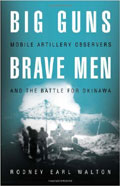 BIG GUNS, BRAVE MEN
BIG GUNS, BRAVE MEN
by Rodney Earl WaltonIntended as a springboard to an amphibious invasion of Japan, the conquest of Okinawa was the largest, bloodiest battle of the Pacific War and the greatest air-sea battle in history. The scope and intensity of the desperate eighty-two-day battle, however, was overshadowed by the euphoria of VE Day, the sudden, terrifying end of the war with Japan after atomic bombs were dropped on Hiroshima and Nagasaki, and history's focus on the dramatic fight for Iwo Jima. While other books about Okinawa have emphasized the role of infantrymen, armor, and U.S. Marines, this work takes a fresh perspective by focusing on the vital role played by the U.S. Army's forward artillery observers.
[Read more] 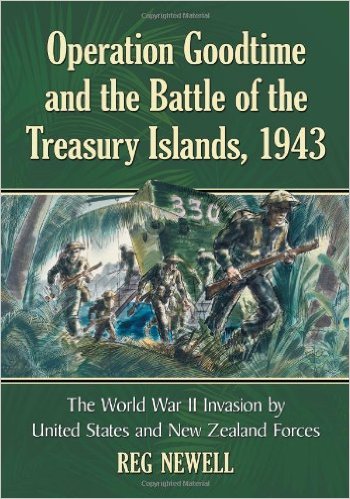 OPERATION GOODTIME AND THE BATTLE OF THE TREASURY ISLANDS, 1943: THE WORLD WAR II INVASION BY UNITED STATES AND NEW ZEALAND FORCES
OPERATION GOODTIME AND THE BATTLE OF THE TREASURY ISLANDS, 1943: THE WORLD WAR II INVASION BY UNITED STATES AND NEW ZEALAND FORCESOn October 27, 1943, a force of New Zealanders and Americans invaded the Treasury Islands in the South Pacific, retaking them from their Japanese occupiers. Codenamed Operation Goodtime, the action marked the first time New Zealand forces took part in an opposed landing since Gallipoli in 1915. In an unusual allocation of troops in the American-dominated theater, New Zealand provided the fighting men and America the air, naval, and logistical support. Confronting extreme risks against a determined Japanese foe, the Allies nevertheless succeeded with relatively few casualties. Due to the needs for operational security, Operation Goodtime received little publicity and has been relegated to a footnote in the history of the war in the Pacific. This first complete account of the Allied seizure of the Treasury Islands stands as a tribute to the warriors who fought in this struggle.
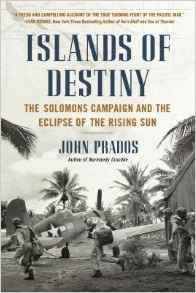 ISLANDS OF DESTINY: THE SOLOMONS CAMPAIGN AND THE ECLIPSE OF THE RISING SUN - John Prados
ISLANDS OF DESTINY: THE SOLOMONS CAMPAIGN AND THE ECLIPSE OF THE RISING SUN - John PradosAcclaimed WWII historian and military intelligence expert John Prados offers a provocative reassessment of the Allies' battle for the Solomon Islands, a turbulent dramatic campaign that, he argues, was the true turning point of the Pacific conflict.
Historians traditionally refer to the Battle of Midway as the point when Allied forces gained the advantage over the Japanese. In Islands of Destiny, Prados points out that the Japanese forces quickly regained strength after Midway and continued their assault undaunted. Taking this surprising fact as the start of his inquiry, he began to investigate how and when the Pacific tide turned in the Allies' favor. His search led him to the decisive battles and strategic maneuvers in the fight for the Solomon Islands.
Beginning with the invasion of Guadalcanal in August 1942, the Solomons became a hotly contested battleground for over a year, culminating in the isolation of Rabaul by the Allies. As military forces fought over the strategically important islands, a secret war of intelligence was also being waged. For a total picture of the conflict, Prados integrates blow-by-blow action on the ground with the code breaking, aerial reconnaissance, secret spy posts, and submarine scouting that were vital to the Allied effort.
The Solomons arena saw some of the most intense combat of WWII, from major naval actions, including a key confrontation between battleships, to air battles that took place almost daily. With expert knowledge and crystal clear prose, John Prados illustrates why these events were not only thrilling, but pivotal in the Allies path to victory.
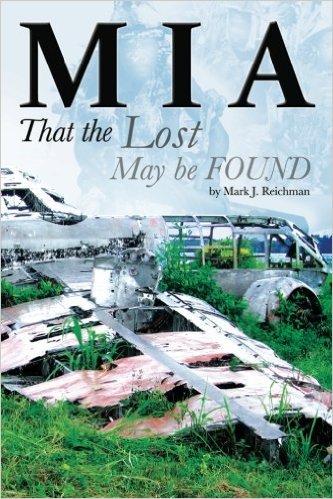 M I A: THAT THE LOST MAY BE FOUND (VOLUME 1)
M I A: THAT THE LOST MAY BE FOUND (VOLUME 1)To have lost a loved one, a brother, daughter, father or son during a war is a tragedy. How can we really understand the pain? But to receive a report that they are Missing in Action (MIA) is equally, if not more, heart-wrenching. The agonizing thoughts of what might have happened never go away no matter how many years have passed. It affects many, not only the immediate family but also aunts and uncles, cousins and friends. With unending hope, they imagine that their loved one had survived and resumed a life somewhere else. Their hope never diminishes, and the pain never goes away, even with the passing of time.
Mark and his family have discovered 15 crashed airplane sites in the jungles of Papua New Guinea. Many of them possibly have human remains in the area. He worked with the Australian Air Force in the remains recovery of the crew a bomber that had been missing for 66 years.
As you read his story and are gripped with the excitement each adventure brought, I hope you can get a sense of the euphoria after having found a lost military airplane with its crew, and the humbling experience after hearing from the grateful families.
For those who are still wondering where your loved ones are, they must never give up hope because there is an enormous amount of effort, both by governments and amateur historians who are dedicated to finding MIAs in order that the lost may be FOUND.
 PROFILES IN SURVIVAL: THE EXPERIENCES OF AMERICAN POWS IN THE PHILIPPINES DURING WORLD WAR II
PROFILES IN SURVIVAL: THE EXPERIENCES OF AMERICAN POWS IN THE PHILIPPINES DURING WORLD WAR II
by John C. Shively The stories of seven men and one woman from Indiana who survived the horrors of captivity under the Japanese in the Pacific during World War II are captured in vivid detail by author John Shively. These Hoosiers stationed in the Philippines were ordered to surrender following the fall of Bataan and Corregidor in 1942. It was the largest surrender of American armed forces in U.S. history. For many, it was the beginning of three years of hell starting with the infamous Bataan Death March, facing brutal conditions in POW camps in the Philippines, and horrific journeys to Japan for some onboard what came to be known as hellships.
Former Indiana governor Edgar D. Whitcomb, one of those featured in the book, notes that the American prisoners had to endure unimaginable misery and brutality at the hands of sadistic Japanese guards, as they were routinely beaten and many were executed for the most minor offenses, or for mere sport. Shively, said Whitcomb, has done a masterful job of recounting the realities of life as a Japanese prisoner. These poignant stories attest to the innate enduring human struggle and drive to survive, tenacity in the face of adversity, and the dogged determination and unwillingness to give up when all seemed lost.
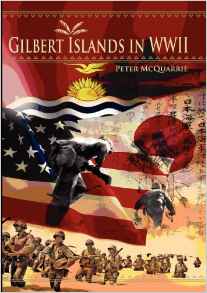 THE GILBERT ISLANDS IN WORLD WAR II
THE GILBERT ISLANDS IN WORLD WAR II
by Peter McQuarrie World War Two history remembers the Gilbert Islands for the Battle of Tarawa, the US Marines’ first bold
amphibious assault against a Japanese stronghold in the Pacifi c Islands. But there is much more to the
WWII story of the Gilbert Islands than a single battle. In addition to the Battle of Tarawa, this book also tells of the periods of Japanese and American occupations, of coast-watching and German raiders. This history of a time and place is also a story of the people involved. In addition to the Americans and Japanese it is also the story of Gilbert and Ellice Islanders, New Zealanders, British, Chinese, German-Marshallese and “Kai Viti” people (British Fiji Citizens), who by one means or another became caught up in the war in the Gilbert Islands. The author has used oral and written accounts of people who were directly involved, as well as offi cial records in archives in Kiribati, Fiji, Tuvalu, New Zealand, the United States and Australia. This is a thoroughly researched, comprehensive and unique account of WWII as experienced in these small and remote atolls of the Central Pacific.
Published by:
Masalai Press
368 Capricorn Avenue
Oakland, CA 94611 USA
masalaipress@gmail.com
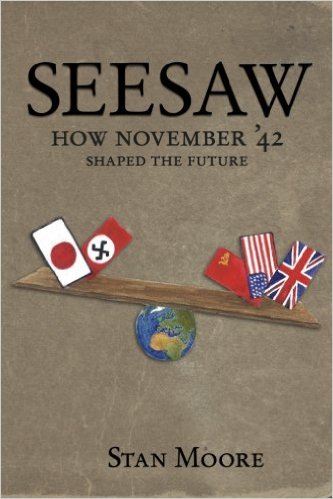 SEESAW: HOW NOVEMBER '42 SHAPED THE FUTURE
SEESAW: HOW NOVEMBER '42 SHAPED THE FUTURE
BY STAN MOORE By late 1942, the world had been fighting World War Two for a long time with no end in sight. November of that year saw campaigns and battles which set the course of the rest of the war. Specific battles, decisions, and actions contributed to the war’s outcome. Those results continue to shape lives around the world. The author discusses what led up to the battles and campaigns of late 1942, and looks at how specific decisions and their effects are important to today’s world. Moore draws on new and unpublished letters and personal accounts. He also taps a wide range of books, journals, and research. Join the author as he explores personalities known and unknown, pivotal battles and decisions, and underlying reasons and motivations.
Also available at the Tattered Cover Bookstore,
www.tatteredcover.com.
 THE LAST ZERO FIGHTER: FIRSTHAND ACCOUNTS FROM WWII JAPANESE NAVAL PILOTS (VOLUME 1) [Paperback]
THE LAST ZERO FIGHTER: FIRSTHAND ACCOUNTS FROM WWII JAPANESE NAVAL PILOTS (VOLUME 1) [Paperback]
by Dan King Firsthand accounts from interviews conducted in Japan with five WWII Japanese Naval aviators. All are veterans of the many pivotal battles of the Pacific War including; USS Panay, Pearl Harbor, Wake Island, Rabaul, Darwin, Midway, Guadalcanal, Papua New Guinea, Iwo Jima, Okinawa, the Kamikaze in the Philippines and others. The book is 292 pages plus 78 photos (many from the veterans' own albums) 9 original maps and illustrations. Includes an introduction to the Japanese pilot training system for both officers and enlisted men. Each pilot is followed from the time he joined the navy until war's end. They explain; why they joined the navy, what they thought about the war, about the aircraft they flew, how they felt about their friends and their former adversaries. The interviews were conducted firsthand in their own language by an American Pacific War historian who spent 10 years living in Japan.
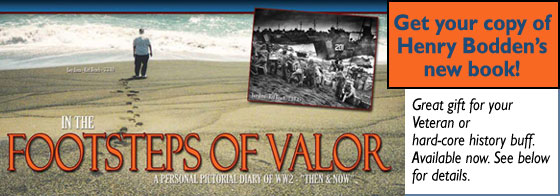 IN THE FOOTSTEPS OF VALOR
IN THE FOOTSTEPS OF VALOR by
Henry Bodden is a brand new 220-page hardback with a personal pictorial diary consisting of trips to Holland, Israel, Jordan, Europe, the Philippines, Pearl Harbor, Oahu, Guam and Iwo Jima. Using WWII photos from the National Archives and other sources as "then" photos, author Henry Bodden would then find these sites and photograph them as "now" photos for comparison. This book is available by calling Henry Bodden at 918-376-9417 or emailing him at
hebodden@gmail.com or go to his website:
www.inthefootstepsofvalor.com.
Cost of the book is $34.95 including shipping and handling.
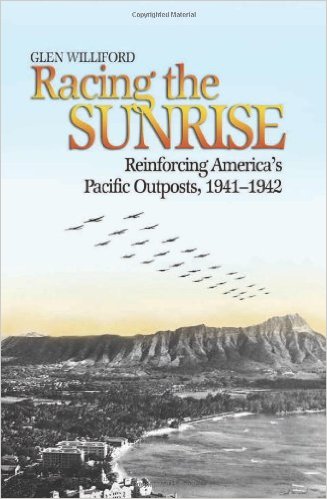 RACING THE SUNRISE: THE REINFORCEMENT OF AMERICA'S PACIFIC OUTPOSTS, 1941-1942
RACING THE SUNRISE: THE REINFORCEMENT OF AMERICA'S PACIFIC OUTPOSTS, 1941-1942
by Glen M. Williford Glen Williford lends new insight into the reasons for America's relatively quick comeback from the attack on Pearl Harbor. For the first time, he tells the complete story of American efforts to build and reinforce its Pacific garrisons in the Philippines and Hawaii during the six months prior to the war and to supply Bataan and Corregidor in early 1942. One effort involved a carefully organized convoy and air ferry routes that were reaching their heights in December 1941. The author fully describes the reinforcement efforts in the context of both the existing military strategies and the realities and physical limits of America s defense capabilities at the time. It concludes with an examination of the transition from the desperate defensive efforts to protect lines of communication to Australia and build a major base there to using these assets to resume the offensive.
 "THE PACIFIC" -miniseries DVD
"THE PACIFIC" -miniseries DVDFrom the producers of Band of Brothers, The Pacific tracks the real-life journeys of three U.S. Marines--Robert Leckie (James Badge Dale), Eugene Sledge (Joe Mazzello) and John Basilone (Jon Seda)--across the vast canvas of the Pacific Theater during World War II. The miniseries follows these men and their fellow Marines from their first battle with the Japanese on Guadalcanal, through the rain forests of Cape Gloucester and the strongholds of Peleliu, across the bloody sands of Iwo Jima and through the horror of Okinawa, and finally to their triumphant but uneasy return home after V-J Day.
Video, DVD or Blu-Ray versions.
We recommend
MAJOR AND MRS HOLT'S BATTLEFIELD GUIDE BOOKS AND BATTLEFIELD MAPSIllustrated battlefield guide books and maps of the First & Second World Wars -Western Front & Gallipoli.
Website:
www.guide-books.co.uk/ We also recommend
CIB MEDIALarge selection of American military unit and campaign history videos and books from the 20th and 21st Century including World War I, World War II, Korean War, Vietnam War, the Wars against Iraq, the War on Terrorism, and more. Our large DVD and VHS video library includes many of the best military documentary television specials from HistoryChannel, A&E, CNN and CBS.
Website:
www.cibmedia.com/
 ON A MOUNTAINSIDE
ON A MOUNTAINSIDE, by Malcolm Decker
Following the surrender of Filipino and American forces on Bataan Peninsula in the Philippines early in the fifth month of the Japanese onslaught that plunged the United States into World War II, a small group of dedicated American fighting men refused to accept defeat. Some took refuge immediately in the jungles and mountains of Luzon, others did so after escaping from the infamous Death March, and a very few joined up after fleeing from various POW camps. Initially totaling around 400 men, only half would survive three years of Japanese occupation.
Some of these escapees attempted to ride out the conflict in hiding. However, a courageous few rallied together to organize guerrilla resistance to the cruel Japanese occupation. One of these heroic men was Doyle Decker. Doyle's son, Malcolm Decker, a combat veteran of the Vietnam War, is finally telling his father's story, and doing so in fine fashion.
On a Mountainside is a chronicle of courage and perseverance. It traces the escape of U.S. Army Private Doyle Decker and several others from the Bataan Death March, their finding refuge among the rural Filipino population, and, finally, their joining a fledgling American-led guerrilla initiative which organized armed resistance by forming the 155th Provisional Guerrilla Battalion, manned primarily by the tiny Negrito tribesmen. The Negritos were a primitive group of pygmies similar to Australian aborigines. Their presence in the Philippines predates the arrival of the ethnically Malay groups from which most Filipinos are descended. They also proved to be excellent at guerrilla warfare.
Doyle Decker, orphaned at nine, dropped out of school at twelve to earn his keep wandering from farm job to ranch job, often working for no more than room and board. Joining the U.S. Army during the Great Depression, he followed a route out of poverty taken by many before and since. This undereducated farm boy could not have foreseen that this enlistment would lead to three years of living like a hunted animal as he fought off disease, avoided Japanese patrols, and helped organize a Negrito guerrilla resistance army. It is a wonder he survived, but survive he did and was promoted to a leadership position in the guerrilla battalion. When General Douglas MacArthur finally led U.S. forces back to Luzon, Doyle and his fellow officers positioned the 155th Provisional Guerrilla Battalion in a successful blocking action that prevented many Japanese from escaping into the Zambales Mountains and inflicted heavy casualties on those who did.
In writing his book, Malcolm Decker leaned heavily on conversations with his father and Bob Mailheau, his father's close friend and comrade in the guerrilla resistance. He also conducted considerable historical research. Written in narrative form and using dialogue developed through these personal conversations, the author gives an intimacy to the story that might otherwise have been lacking. The book is certain to induce a patriotic glow in its readers. It is a moving tribute to sustained courage in the face of almost unimaginable adversity. The timing of its publication is particularly appropriate as our country, being tested yet again, has placed large numbers of its sons and daughters in harms way in foreign lands.
Review by: JMHoulahan:3/23/04
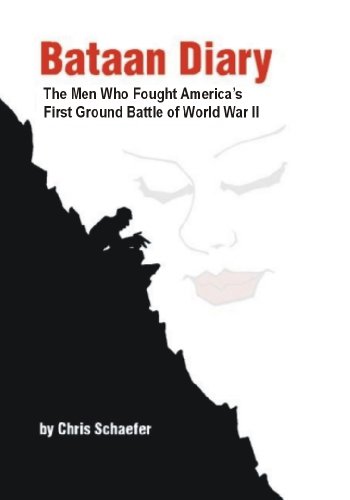 BATAAN DIARY
BATAAN DIARY, by Chris Schaefer
Chris Schaefer's extremely readable
Bataan Diary: An American Family in World War II, 1941-1945 is a well-documented story of resistance and survival during the Japanese occupation of the Philippines.
Built around the World War II diaries kept by Major Frank Riley Loyd and his wife, Evelyn, the book chronicles the difficult struggle of Frank Loyd, half-starved and seriously ill, sheltering in a series of jungle hideouts. Then, as MacArthur's return approaches, he joins the guerrilla war.
Another dimension is added by an occasional chapter detailing the stateside fears and frustrations of Evelyn, not knowing if her husband was still alive, while she immerses herself in supporting the war effort.
However, the book is more than the combined diaries of the Loyds. It also examines the larger war effort in the Pacific and the involvement of other Americans and Filipinos, many of them Philippine Scouts, in the anti-Japanese guerrilla movement on Luzon. It contains interesting information on commando infiltration teams, both Filipino and American, sent in by submarine to help shore up the resistance movement. It also examines in some detail prison camp conditions and the brutal counter intelligence activities of the dread Japanese Kempei-tai.
The book begins with the idyllic tropical existence of the Loyds during nearly a year and a half of pampered and languid duty in peacetime Manila. He was Provost Marshall at Fort McKinley and she taught fourth grade at the base school. American officers in this peacetime army worked half days and spent their evenings socializing with other military families. Training and equiping of the Philippine Army also proceeded at a leisurely pace, which would have important ramifications when war broke out.
As U.S.-Japanese relations deteriorated in the summer of 1941, this colonial idle ended as military families, including Evelyn and the two children, were sent back to the United States. In late July, the Japanese invaded French Indo China and the U.S., Britain and the Netherlands embargoed all trade with Japan, cutting off the flow of oil, rubber and other strategic material needed by the Japanese to sustain their conquest of China. War now appeared inevitable.
Shortly following the devastating Japanese surprise air assaults on Pearl Harbor and the Philippines in early December, a Japanese invasion force landed on Luzon and forced the Filipino and American troops to retreat to defensive positions on Bataan and Corregidor. Four months later, when Bataan surrendered, Major Loyd was among the small group of American and Filipino military men who escaped to nearby mountains and jungles. Most of these men, including Frank Loyd, spent many months surviving at a subsistence level thanks to the courageous generosity of the local Filipino population.
Eventually Frank and many others would join guerrilla groups, the nucleus of which was organized by American officers put in place by General MacArthur before the surrender. Most of these guerrilla leaders and about half of the approximately 400 Americans who joined them would not survive the war.
In recounting the failures and successes of these guerrilla units, Schaefer also examines the indigenous civilian intelligence network in Manila, which consisted predominantly of upper class Filipinos. Many of these civilian patriots also did not survive the war, as the Japanese successfully infiltrated the movement.
Another interesting feature of the book is a description of the infighting among the various guerrilla leaders, as they vied to assert command over each other and to expand their geographic sway. Although largely ego-driven, this also was the result of a need to claim scant resources in manpower and civilian support. Further complicating the resistance mix, were the Communist-led Hukbalahap, who, when not fighting the Japanese, often clashed violently with American-led guerrilla groups.
Despite the burdens of hunger, disease, scarce resources, infighting and the depredations of the Japanese, sufficient guerrilla forces were mobilized and trained to form a very useful auxiliary force when MacArthur returned to liberate the Philippines. An important component of these guerrilla groups was the Philippine Scouts, superbly-trained Filipino soldiers who comprised the majority of the regular U.S. Army's infantry and cavalry troops in the Philippines. (The Scouts should not be confused with the Philippine Army troops, who were mostly conscripts and not nearly as well trained.) Rallying to the cause in large numbers, the Scouts were crucial in the training of other Filipinos in guerrilla warfare. The Scouts themselves proved as adept at guerrilla warfare as they had been in their heroic defense of Bataan and Corregidor during the early months of the war.
An attractive feature of the book is its map collection, which helps the reader visualize where the action took place. Indeed, with its maps, bibliography, extensive endnotes, and lengthy index, this book is a useful reference tool for more serious students of World War II guerrilla warfare on Luzon. As such it is an excellent companion volume to Malcolm Decker's
On a Mountainside, reviewed above.
Reviewed by J. Michael Houlahan
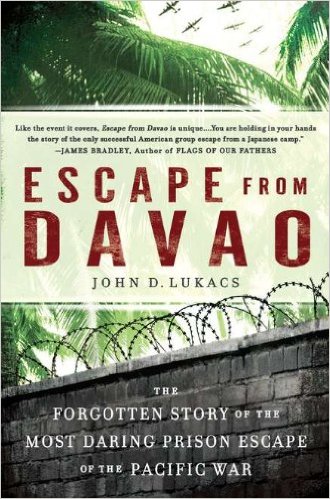 ESCAPE FROM DAVAO
ESCAPE FROM DAVAO
THE FORGOTTEN STORY OF THE MOST DARING PRISON BREAK OF THE PACIFIC WARBy John D. Lukacs
On April 4, 1943, ten American prisoners of war and two Filipino convicts executed a daring escape
from one of Japan’s most notorious prison camps. The prisoners were survivors of the infamous Bataan Death March and the Fall of Corregidor, and the prison from which they escaped was surrounded by an impenetrable swamp and reputedly escape-proof. Theirs was the only successful group escape from a Japanese POW camp during the Pacific war. Escape from Davao is the story of one of the most remarkable incidents in the Second World War and of what happened when the Americans returned home to tell the world what they had witnessed.
Davao Penal Colony, on the southern Philippine island of Mindanao, was a prison plantation where
thousands of American POWs toiled alongside Filipino criminals and suffered from tropical diseases and malnutrition, as well as the cruelty of their captors. The American servicemen were rotting in a hellhole from which escape was considered impossible, but ten of them, realizing that inaction meant certain death, planned to escape. Their bold plan succeeded with the help of Filipino allies, both patriots and the guerrillas who fought the Japanese sent to recapture them. Their trek to freedom repeatedly put the Americans in jeopardy, yet they eventually succeeded in returning home to the United States to fulfill their self-appointed mission: to tell Americans about Japanese atrocities and to rally the country to the plight of their comrades still in captivity. But the government and the military had a different timetable for the liberation of the Philippines and ordered the men to remain silent. Their testimony, when it finally emerged, galvanized the nation behind the Pacific war effort and made the men celebrities.
Over the decades this remarkable story, called the “greatest story of the war in the Pacific” by
the War Department in 1944, has faded away. Because of wartime censorship, the full story has never been told until now. John D. Lukacs spent years researching this heroic event, interviewing survivors, reading their letters, searching archival documents, and traveling to the decaying prison camp and its surroundings. His dramatic, gripping account of the escape brings this remarkable tale back to life, where a new generation can admire the resourcefulness and patriotism of the men who fought the Pacific war.
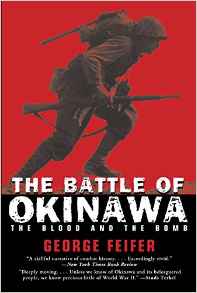 THE BATTLE OF OKINAWA: THE BLOOD AND THE BOMB
THE BATTLE OF OKINAWA: THE BLOOD AND THE BOMB, by George Feifer
The Battle of Okinawa was "the largest land-sea-air battle in history," yet remarkably little is know about this final major engagement of World War II. Based on interviews with Americans, Japanese, and Okinawans who endured the fighting, this masterpiece of military history explores every aspect of the three-month battle and its aftermath in vivid detail.
The U.S. invasion of Okinawa involved 1,457 ships and over half a million men. For six full days artillery fire poured down on the island while the Japanese holed up in underground bunkers and tunnels like moles, darting out for supplies only at night. In examining the battle from the perspective of both generals and infantrymen, George Feifer explains the substantial differences in the training and mindset between the soldiers, particularly the Japanese's fiercely nationalistic stance and willingness to die for their emperor that both impressed and baffled the Americans. Since most Japanese refused to surrender even after American victory was assured, less than 5 percent survived the battle. And worse bloodshed was certain to come, for the next step in the war was an invasion of Japan itself. Indeed, the Japanese government encouraged all 100 million Japanese to "die proudly" in defense of their homeland. It was both this kamikaze devotion and the heavy human losses at Okinawa that led directly to the decision to drop the atomic bomb on Japan rather than pay the high price of a large-scale invasion.
Feifer also lends a voice to the local civilians, certainly the least considered element in the battle, focusing on how the hospitable and peaceful Okinawans were caught in a crossfire they could neither comprehend nor control. During the fighting, over a quarter of a million Okinawans were herded into U.S. detention camps in order to get them out of the way of the fighting, yet an estimated 150,000 died from artillery attacks or because locals were often indistinguishable from Japanese soldiers. In a sense, the war continues for Okinawans since one-fifth of the best land on their island is still occupied by the U.S. military as well as a Japanese force. Feifer's excellent book should ensure that this horrific battle is never forgotten, for "if a symbol is needed to help preserve the memory of the Pacific War, Okinawa is the most enduring one." --
Shawn Carkonen
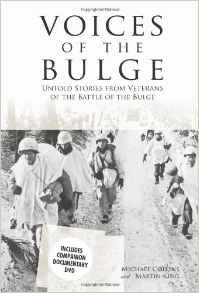 VOICES OF THE BULGE
VOICES OF THE BULGEby Michael Collins and Martin King
The powerful German counteroffensive operation code-named "Wacht am Rhein" (Watch on the Rhine) launched in the early morning hours of December 16, 1944, would result in the greatest single extended land battle of World War II. To most Americans, the fierce series of battles fought from December 1944 through January 1945 is better known as the "Battle of the Bulge." Almost one million soldiers would eventually take part in the fighting. Different from other histories of the Bulge, this book tells the story of this crucial campaign with first-person stories taken from the authors' interviews of the American soldiers, both officers and enlisted personnel, who faced the massive German onslaught that threatened to turn the tide of battle in Western Europe and successfully repelled the attack with their courage and blood. Also included are stories from German veterans of the battles, including SS soldiers, who were interviewed by the authors.
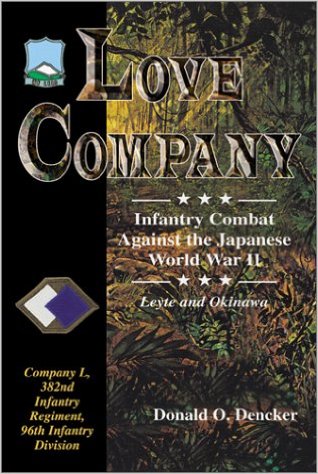 LOVE COMPANY, INFANTRY COMBAT AGAINST THE JAPANESE WWII
LOVE COMPANY, INFANTRY COMBAT AGAINST THE JAPANESE WWIIAuthor Don Dencker is a veteran of the Battle of Okinawa, 96
th Infantry Division. Don received the Bronze Star after the battle for "meritorious achievement" in connection with military operation against the enemy on Okinawa. He serves as the Historian for the 96
th Infantry Division and also as a tour guide for Valor Tours. Get an
autographed copy of this book from Don Dencker by calling him at 608-837-7479.
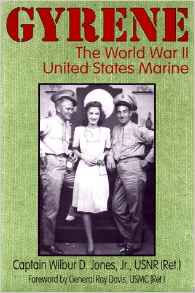 GYRENE
GYRENEby Capt. Wilbur Jones
The persona and character of the World War II Marine vividly come alive in Gyrene. The book interprets and analyzes the Marine's personal and cultural history, the pleasant and unpleasant, serious and not so, and the ordinary and exceptional. It is about men doing their duty and nothing else.
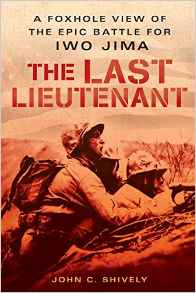 THE LAST LIEUTENANT: A FOXHOLE VIEW OF THE EPIC BATTLE FOR IWO JIMA
THE LAST LIEUTENANT: A FOXHOLE VIEW OF THE EPIC BATTLE FOR IWO JIMA by
John C. ShivelyShively has documented in a very readable fashion the transformation of a young Hoosier into a disciplined member of the United States Marine Corps. His book is a detailed and touching tale of one man’s experience of the battle of Iwo Jima, and the many excellent photographs and maps enhance the story." —Major General Fred Haynes, USMC (Ret.)
The 36-day assault on the small volcanic island known as Iwo Jima resulted in more than 26,000 American casualties, including 6,800 dead. Of the 20,000 Japanese defenders, only 1,083 survived. The Marines’ efforts secured what would become a vital emergency landing strip for crippled B-29s returning from bombing runs. Twenty-seven Medals of Honor were awarded to Marines and sailors, many posthumously, more than were awarded for any other single operation during the war.
Jim Craig was a platoon commander with the Marines on Iwo Jima. This book presents his story, as told to his nephew, John C. Shively. A particularly vivid and exciting account of some of the most intense fighting of the Pacific War, the immediacy of the story is heightened by the detail that Shively’s research has added to Craig’s recollections. The result is one of the most realistic depictions of combat ever written.
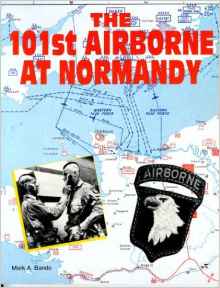 THE 101ST AIRBORNE AT NORMANDY
THE 101ST AIRBORNE AT NORMANDY
Review: "WWII has always fascinated me. I generally prefer war novels like THE NAKED AND THE DEAD or THE TRIUMPH AND THE GLORY to histories, but the better written nonfiction books are well worth reading. I though Bando's "The 101st Airborne at Normandy" was terrific, very informative, especially about the courage and initiative of the paratroops themselves to salvage the situation after the scattered drops of the night. Very good book!"
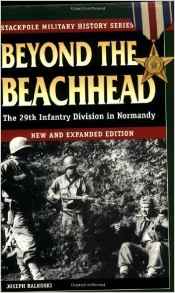 BEYOND THE BEACHHEAD: THE 29TH INFANTRY DIVISION IN NORMANDY
BEYOND THE BEACHHEAD: THE 29TH INFANTRY DIVISION IN NORMANDY
by Joseph Balkoski, Stephen E. Ambrose
Originally published in hardcover in 1989, this book, which has become the standard for future histories of the World War II citizen-soldier, illustrates the brutal realities of life in combat for the 45 days from Omaha Beach to the liberation of St. Lo. 63 illustrations.
 FATHER FOUND
FATHER FOUND by Duane Heisinger
Father Found is a well-written, thoroughly researched and powerful account of the life of Americans who served in the Philippines during WWII and their subsequent years as prisoners of the imperial japanese. Most of the accounts from this period of time are told in the first person, by those few who survived (Give Us This Day, by Sidney Stewart, for example). What sets this book apart from others is that it is a historical perspective told from the notes, diaries, stories of several survivors; rather than one. Thus, one gets a more robust picture of POW existence. The author's goal in writing the book is to try and trace his father's life from just before WWII until his death a few months before the surrender of Japan. While the initial parts of the book are focused on the author's father exclusively, the presentation of the material makes for reading that any reader can relate to. As the war progressed the author found less and less first hand information from his father and the book slowly becomes an historical perspective on POW survival under the most grizzly and barbaric conditions imaginable. The author makes a strong effort to understand how any group of people could carry out such atrocities on another. Although he finds no justification for the actions of the japanese authorities toward the prisoners, he delves into many of the radical differences between the American and the Japanese cultures which contributed to the extreme conditions. The author did an excellent job of researching his topic; from diaries, national archives, war crime trial transcripts and interviews. As a final personal triumph the author is able to track down where his father's remains were buried in Hawaii. Thus, the book is a triumph for the author in two ways: he finds out more about who his father was and he finds his final resting place. Be advised this book is not for the faint of heart. The conditions endured by the POWs are worse than any words can describe.
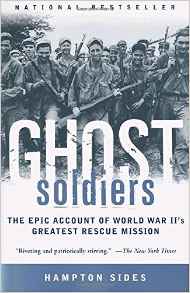 GHOST SOLDIERS: THE EPIC ACCOUNT OF WORLD WAR II'S GREATEST RESCUE MISSION
GHOST SOLDIERS: THE EPIC ACCOUNT OF WORLD WAR II'S GREATEST RESCUE MISSION by Hampton Sides
On January 28, 1945, 121 hand-selected U.S. troops slipped behind enemy lines in the Philippines. Their mission: March thirty rugged miles to rescue 513 POWs languishing in a hellish camp, among them the last survivors of the infamous Bataan Death March. A recent prison massacre by Japanese soldiers elsewhere in the Philippines made the stakes impossibly high and left little time to plan the complex operation.
In Ghost Soldiers Hampton Sides vividly re-creates this daring raid, offering a minute-by-minute narration that unfolds alongside intimate portraits of the prisoners and their lives in the camp. Sides shows how the POWs banded together to survive, defying the Japanese authorities even as they endured starvation, tropical diseases, and torture. Harrowing, poignant, and inspiring, Ghost Soldiers is the mesmerizing story of a remarkable mission. It is also a testament to the human spirit, an account of enormous bravery and self-sacrifice amid the most trying conditions.
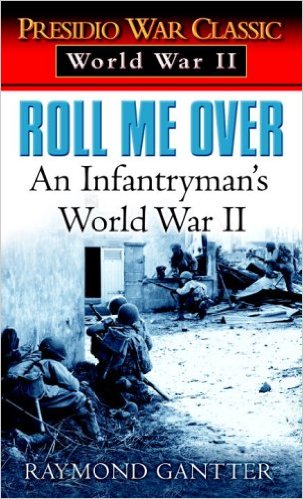 ROLL ME OVER : AN INFANTRYMAN'S WORLD WAR II
ROLL ME OVER : AN INFANTRYMAN'S WORLD WAR II
by Raymond Gantter
From the beaches of Normandy to the Battle of the Bulge to the border of Czechoslovakia, an American infantryman recounts his journey through the expiring Third Reich, offering an insightful and detailed account of his experiences under fire.
When Raymond Gantter arrived in Normandy in 1944, bodies were still washing up from the invasion. He and his fellow infantrymen moved across northern France and Belgium, taking part in the bloody Battle of the Bulge, penetrating into and across Germany, fighting all the way to the Czech border. From dueling with unseen snipers in ruined villages to fierce battles against Hitler's panzers, Gantter skillfully portrays their progress across a tortured continent.
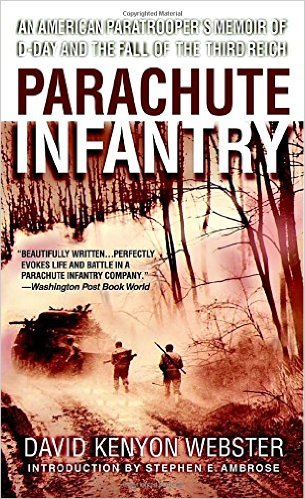 PARACHUTE INFANTRY : AN AMERICAN PARATROOPER'S MEMOIR OF D-DAY AND THE FALL OF THE THIRD REICH
PARACHUTE INFANTRY : AN AMERICAN PARATROOPER'S MEMOIR OF D-DAY AND THE FALL OF THE THIRD REICH
by David Kenyon Webster, Stephen E. Ambrose (Introduction)
David Kenyon Webster's personal account of the D-day invasion and the fall of the Third Reich is beautifully written and completely captivating. Though he did jump in Normandy on D-Day, and saw the war to the end, his actual combat experience was somewhat limited. He recalls only one definite kill, a retreating German soldier who was thought to be a runner. Webster admits that this action was one of the few times he ever fired his rifle in combat. For Webster, the real war was fought inside his mind, as he tried to find a personal acceptance and justification for being in the army and fighting in WWII....Many WWII soldiers say that the army (service) made them better people. With a negative and sometimes hateful tone, Webster vividly recounts his experiences. This book is a must read for anybody who is interested in learning what many soldiers were thinking and saying as they participated in the largest military invasion in history.
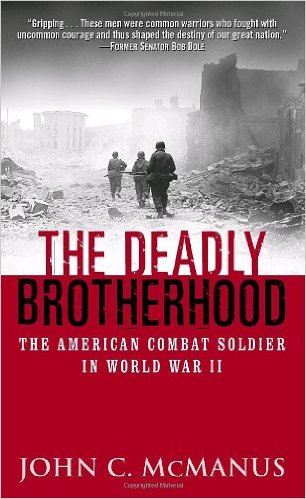 THE DEADLY BROTHERHOOD : THE AMERICAN COMBAT SOLDIER IN WORLD WAR II
THE DEADLY BROTHERHOOD : THE AMERICAN COMBAT SOLDIER IN WORLD WAR II
by John C. McManus
What makes a soldier enter the inferno of death and destruction that is the battlefield? What was battle like for the World War II American combat soldier and marine? Using letters, diaries, on the spot historical surveys, memoirs, and oral histories, DEADLY BROTHERHOOD examines and answers these questions fully, not as an examination of military doctrine and strategy, but as a work full of flesh-and-blood realities of survival. 32 photos.
The Deadly Brotherhood provides accounts from veterans of nearly every division (armor, infantry, airborne, marine) that saw combat in World War II. Ultimately the most basic question is why they did it. Why did these American combat soldiers endure what should have been unendurable? What made them perform effectively and cohesively and draw on reserves of courage that they probably thought they did not possess? Author John C. McManus discovers that to a great extent, they fought for one another, made real by a bond that is accurately termed a "brotherhood." The GI leaving his foxhole in the Ardennes might not have liked the soldier next to him, but he would do almost anything to help him. The same was true for his counterpart in Italy and the Pacific. The brotherhood was not unique to any one unit, sector, or theater. It was pervasive among the troops who fought the war.
 THE SECOND WORLD WAR
THE SECOND WORLD WAR
by John Keegan
Much more than a mere chronological narrative, the history of World War II is recounted both periodically and thematically. Keegan analyzes five crucial battles, each characteristic of a distinctive kind of warfare ofthe period. Photographs, maps, diagrams.
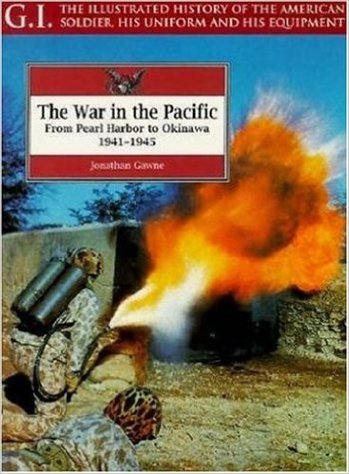 THE WAR IN THE PACIFIC : FROM PEARL HARBOR TO OKINAWA, 1941-1945 (G.I. SERIES)
THE WAR IN THE PACIFIC : FROM PEARL HARBOR TO OKINAWA, 1941-1945 (G.I. SERIES)by Jonathan Gawne
Paperback - 72 pages (October 1996)
Discusses the training, supplies, equipment and role of American Army ground troops fighting in the Pacific during World War II.
 AMERICAN OCCUPATION OF JAPAN AND OKINAWA
AMERICAN OCCUPATION OF JAPAN AND OKINAWA
by Michael S. Molasky
Reviews:
The American Occupation of Japan and Okinawa: Literature and Memory is a definitive work, the result of a Herculean task. Researchers for years to come will be indebted by this groundbreaking project.
–
Humanities and Social Sciences Online
'Molasky's excellent study of Japanese occupation literature is thoroughly researched, well written, and contributes substantially to our understanding of an extremely important but heretofore largely neglected area of postwar Japanese literature.' -
The Journal of Asian Studies
'The American Occupation of Japan and Okinawa: Literature and Memory is a definitive work, the result of a Herculean task. Researchers for years to come will be indebted by this groundbreaking project.' -
H-Japan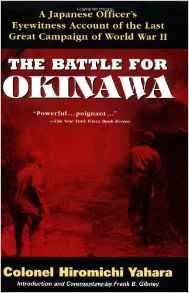 THE BATTLE FOR OKINAWA
THE BATTLE FOR OKINAWA by Hiromichi Yahara, Frank B. Gibney
First published in Japan in 1973, this personal account of the last great battle of WWII is from the viewpoint of the Japanese Army officer in charge of plans and operations. Yahara reveals how his battle plan, based on a strategy of attrition, was overruled by Gen. Mitsuru Ushijima in favor of a wasteful offensive policy ("absurd suicide tactics"). He describes how orders for retreat-and-attack forays were developed and issued and explains how the site of the spectacular last stand was chosen. When defeat by the Americans was perceived as inevitable, Ushijima ordered a final charge, delivered a formal speech and submitted to the expected ritual beheading. All this is vividly described by the observant Yahara. Disinclined toward suicide himself, he evaded capture for a while by mingling with refugees but was eventually arrested by the Americans. His independence of mind illuminates this interesting narrative; his interpretive comments on the workings of the high command in a series of underground headquarters will be of interest to students of the military art. Gibney, president of the Pacific Basin Institute, was one of the intelligence officers who interrogated Yahara after his capture. Illustrations. Doubleday Military Book Club main selection.
Copyright 1995 Reed Business Information, Inc.
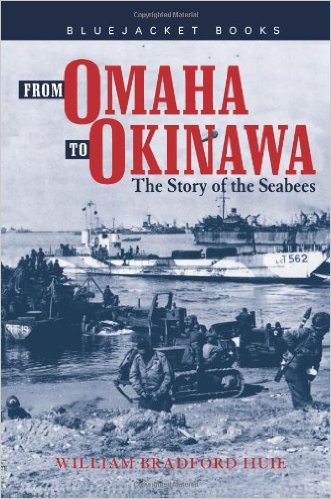 FROM OMAHA TO OKINAWA : THE STORY OF THE SEABEES (BLUEJACKET BOOKS)
FROM OMAHA TO OKINAWA : THE STORY OF THE SEABEES (BLUEJACKET BOOKS)
by William Bradford Huie
In this rousing sequel to his classic Can Do! The Story of the Seabees, William Bradford Huie continues the saga of the combat-trained civilian plumbers, carpenters, heavy equipment operators, wharf builders, and civil engineers who served in the U.S. Navy Construction Battalions. A lieutenant (j.g.) in the battalions himself, Huie begins this story in 1944 with the battle for Iwo Jima when the Seabees secured the beachhead while braving concentrated enemy fire and lwo's daunting terrain to rigfloating causeways, blow up wrecked landing craft, and drive their bulldozers up three terraces that rose from the ocean. This book fully chronicles their heroism, including the unforgettable efforts of the men of the 31st Battalion who crawled the length of a landing strip to pick up shrapnel as Japanese snipers fired away.
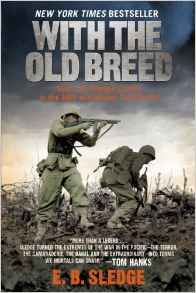 WITH THE OLD BREED : AT PELELIU AND OKINAWA
WITH THE OLD BREED : AT PELELIU AND OKINAWAby Eugene B. Sledge, Paul Fussell (Illustrator)
Based on notes he kept on slips of paper tucked secretly away in his Bible, Eugene Sledge has written a devastingly powerful memoir of his experience fighting in the South Pacific during WWII. John Keegan describes this stirring account of the vitality and bravery of the Marines as "one of the most arresting documents in war literature."
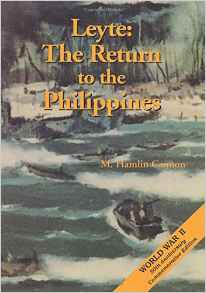 UNITED STATES ARMY IN WORLD WAR 2, WAR IN THE PACIFIC, LEYTE: THE RETURN TO THE PHILIPPINES
UNITED STATES ARMY IN WORLD WAR 2, WAR IN THE PACIFIC, LEYTE: THE RETURN TO THE PHILIPPINES
by Hamlin M. Cannon
With the Leyte Campaign the War in the Pacific entered a decisive stage. The period of limited offensives, bypassing, and island hopping was virtually over. American troops in greater numbers than ever before assembled in the Pacific Theater, supported by naval and air forces of corresponding size, fought and overcame Japanese forces of greater magnitude than any previously met. Though the spotlight is on the front-line fighting, the reader will find in this volume a faithful description of all arms and services performing their missions. The account is not exclusively an infantry story. It covers as well the support of ground fighting on Leyte by large-scale naval operations and by land-based air power under the most adverse conditions. In addition, careful attention to logistical matters, such as the movement of supplies and the evacuation of the wounded, gives the reader a picture of the less spectacular activities of an army in battle.
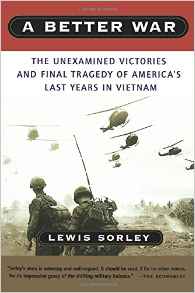 A BETTER WAR : THE UNEXAMINED VICTORIES AND THE FINAL TRAGEDY OF AMERICA'S LAST YEARS IN VIETNAM
A BETTER WAR : THE UNEXAMINED VICTORIES AND THE FINAL TRAGEDY OF AMERICA'S LAST YEARS IN VIETNAM
by Lewis Sorley
Review:
There was a moment when the United States had the Vietnam War wrapped up, writes military historian Lewis Sorley (biographer of two Vietnam-era U.S. Army generals, Creighton Abrams and Harold Johnson). "The fighting wasn't over, but the war was won," he says in this convention-shaking book. "This achievement can probably best be dated in late 1970." South Vietnam was ready to carry on the battle without American ground troops and only logistical and financial support. Sorley says that replacing General Westmoreland with Abrams in 1968 was the key. "The tactics changed within fifteen minutes of Abrams's taking command," remarked one officer. Abrams switched the war aims from destruction to control; he was less interested in counting enemy body bags than in securing South Vietnam's villages.
A Better War is unique among histories of the Vietnam War in that it focuses on the second half of the conflict, roughly from Abrams's arrival to the fall of Saigon in 1975. Other volumes, such as Stanley Karnow's Vietnam and Neil Sheehan's A Bright Shining Lie, tend to give short shrift to this period. Sorley shows how the often-overlooked Abrams strategy nearly succeeded--indeed, Sorley says it did succeed, at least until political leadership in the United States let victory slip away. Sorley cites other problems, too, such as low morale among troops in the field, plus the harmful effects of drug abuse, racial disharmony, and poor discipline. In the end, the mighty willpower of Abrams and diplomatic allies Ellsworth Bunker and William Colby was not enough. But, with its strong case that they came pretty close to winning, A Better War is sure to spark controversy. --John J. Miller
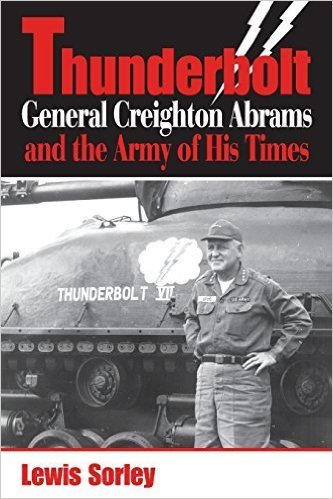 THUNDERBOLT : GENERAL CREIGHTON ABRAMS AND THE ARMY OF HIS TIMES
THUNDERBOLT : GENERAL CREIGHTON ABRAMS AND THE ARMY OF HIS TIMES
by Lewis Sorley
From Kirkus Reviews, July 1, 1992
A fine appreciation of the military professional who arguably ranks among America's very best generals. Drawing on interviews with contemporaries and family members as well as on archival sources, Sorley (a USMA grad who served in Vietnam) offers an unsentimental portrait of a career officer who fought in three wars. A member of West Point's Class of `36, Abrams became an authentic hero leading a tank battalion in WW II's ETO. Winning promotion to brigadier general after a tour of duty in Korea, he handled a number of increasingly responsible assignments before being posted to Southeast Asia as General William Westmoreland's deputy and successor. As Sorley makes clear, Abrams probably would be better and more warmly remembered today had he been given a better war to fight. In any case, Abrams gave a brilliant account of himself despite restrictive rules of engagement and the fact that his civilian superiors had begun a phased reduction of US combat forces. Back in the States after a four-year absence, he was appointed chief of staff, a position that allowed him (before his untimely death at 59 in 1974) to initiate the reforms that eventually helped the US Army win in the Persian Gulf. While Sorley focuses on the talents that gained Abrams renown as a world-class strategist and tactician, he does not scant the qualities that also made him a soldier's soldier and a very human being. In addition to recounting the feats of arms that earned the colorful, cigar-chomping Abrams a legendary reputation among front- line troops and peers, the author provides affecting glimpses of his subject's personal and spiritual life. Though tough-minded and a stickler for integrity and honesty, Abrams (a late-in-life convert to Roman Catholicism) was evidently a devoted father of six, a loving husband, and a compassionate, if demanding, commander. A well-told tale of a paradigmatic warrior.
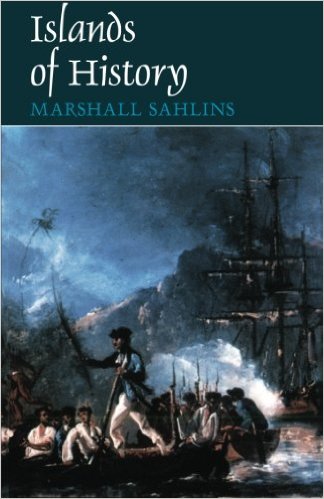 ISLANDS OF HISTORY
ISLANDS OF HISTORY
by Marshall David Sahlins
Marshall Sahlins centers these essays on islands—Hawaii, Fiji, New Zealand—whose histories have intersected with European history. But he is also concerned with the insular thinking in Western scholarship that creates false dichotomies between past and present, between structure and event, between the individual and society. Sahlins's provocative reflections form a powerful critique of Western history and anthropology.
 SAIPAN : THE WAR DIARY OF JOHN CIARDI
SAIPAN : THE WAR DIARY OF JOHN CIARDI
by John Ciardi, Edward Cifelli (Introduction)
Here's a poet who was a gunner in a B-29 over Tokyo, and who kept a diary during his months on Saipan. Really fine, really worth reading, for the unvarnished thoughts of the man who kept the journal. Unlike most such journals, it hasn't been edited for publication, though there are a few of Ciardi's own afterthoughts.
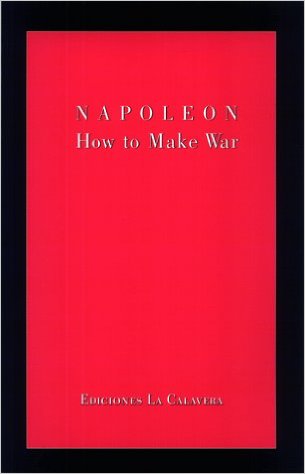 HOW TO MAKE WAR
HOW TO MAKE WAR
by Napoleon Bonaparte, Yann Cloarec (Editor), Keith Sanborn (Translator), Napoleon
Literary Nonfiction. NAPOLEON: HOW TO MAKE WAR lists the general's 111 maxims for combat, divided into the categories General Principles, Offensive and Defensive. Translated by Keith Sanborn from the 1973 French collection "Comment faire la guerre" by Yann Cloarec. Also contains an essay by Sanborn on the intersection of Napoleon, DeBord and Paul Virillo entitled "Postcards from the Berezina."
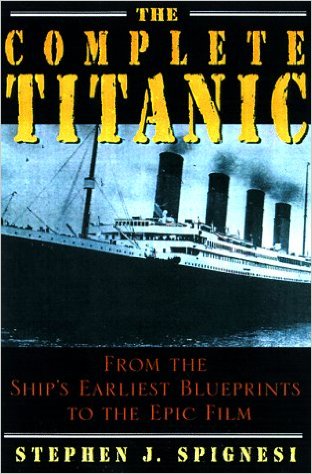 THE COMPLETE TITANIC : FROM THE SHIP'S EARLIEST BLUEPRINTS TO THE EPIC FILM
THE COMPLETE TITANIC : FROM THE SHIP'S EARLIEST BLUEPRINTS TO THE EPIC FILM by Stephen J. Spignesi
Review:
Many books have been written on the Titanic, but this one is unique. It is incredibly thorough, detailed, and well-written. I purchased it after I had devoured "Titanic: An Illustrated History", and rather than duplicating all that information, this book contains hundreds of new details and facts. Just as Mr. Spignesi says, it includes menus (though not complete for 1st and 2nd class-- instead there are samples), Molly Brown's insurance claim, a fascinating list of movie bloopers, survivor accounts, Ismay's testimony, etc. I highly, highly recommend this book to anyone with an interest in the Titanic-- you will not be disappointed! I had only two concerns: one, that the "lost scenes from the movie" section was mostly absent (I understand this was removed at the last minute before it went to press-- boo hiss), and two, that there is at least one possible editing error concerning the death of Emily Ryerson's son, which made me a little nervous about how thoroughly this text had been fact-checked. Nevertheless, I completely enjoyed this book and it lives up to its title. The movie bloopers section alone makes it worth reading!
TRAVEL BOOKS
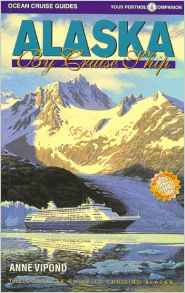 ALASKA BY CRUISE SHIP : THE COMPLETE GUIDE TO THE ALASKA CRUISE EXPERIENCE
ALASKA BY CRUISE SHIP : THE COMPLETE GUIDE TO THE ALASKA CRUISE EXPERIENCE
by Anne Vipons, Alan Nakano (Illustrator), William Kelly (Editor), mic Defreitas, Anne Vipond
Get on board the cruise vacation phenomenon with this international bestseller. From Seattle to Anchorage and beyond, this guide provides readers with solid detail. The author also covers all areas of interest such as history, wildlife, native culture, and much more. Color photos & maps.
Return to top
| CST #2075156-50/IATA #05-911791/ASTA approved
|
|











 PROFILES IN SURVIVAL: THE EXPERIENCES OF AMERICAN POWS IN THE PHILIPPINES DURING WORLD WAR II
PROFILES IN SURVIVAL: THE EXPERIENCES OF AMERICAN POWS IN THE PHILIPPINES DURING WORLD WAR II THE GILBERT ISLANDS IN WORLD WAR II
THE GILBERT ISLANDS IN WORLD WAR II





 BATAAN DIARY, by Chris Schaefer
BATAAN DIARY, by Chris Schaefer







 FATHER FOUND
FATHER FOUND GHOST SOLDIERS: THE EPIC ACCOUNT OF WORLD WAR II'S GREATEST RESCUE MISSION
GHOST SOLDIERS: THE EPIC ACCOUNT OF WORLD WAR II'S GREATEST RESCUE MISSION  ROLL ME OVER : AN INFANTRYMAN'S WORLD WAR II
ROLL ME OVER : AN INFANTRYMAN'S WORLD WAR II  PARACHUTE INFANTRY : AN AMERICAN PARATROOPER'S MEMOIR OF D-DAY AND THE FALL OF THE THIRD REICH
PARACHUTE INFANTRY : AN AMERICAN PARATROOPER'S MEMOIR OF D-DAY AND THE FALL OF THE THIRD REICH  THE DEADLY BROTHERHOOD : THE AMERICAN COMBAT SOLDIER IN WORLD WAR II
THE DEADLY BROTHERHOOD : THE AMERICAN COMBAT SOLDIER IN WORLD WAR II 

 AMERICAN OCCUPATION OF JAPAN AND OKINAWA
by Michael S. Molasky
AMERICAN OCCUPATION OF JAPAN AND OKINAWA
by Michael S. Molasky  THE BATTLE FOR OKINAWA by Hiromichi Yahara, Frank B. Gibney
THE BATTLE FOR OKINAWA by Hiromichi Yahara, Frank B. Gibney  FROM OMAHA TO OKINAWA : THE STORY OF THE SEABEES (BLUEJACKET BOOKS)
FROM OMAHA TO OKINAWA : THE STORY OF THE SEABEES (BLUEJACKET BOOKS) WITH THE OLD BREED : AT PELELIU AND OKINAWA
WITH THE OLD BREED : AT PELELIU AND OKINAWA UNITED STATES ARMY IN WORLD WAR 2, WAR IN THE PACIFIC, LEYTE: THE RETURN TO THE PHILIPPINES
UNITED STATES ARMY IN WORLD WAR 2, WAR IN THE PACIFIC, LEYTE: THE RETURN TO THE PHILIPPINES A BETTER WAR : THE UNEXAMINED VICTORIES AND THE FINAL TRAGEDY OF AMERICA'S LAST YEARS IN VIETNAM
A BETTER WAR : THE UNEXAMINED VICTORIES AND THE FINAL TRAGEDY OF AMERICA'S LAST YEARS IN VIETNAM  THUNDERBOLT : GENERAL CREIGHTON ABRAMS AND THE ARMY OF HIS TIMES
THUNDERBOLT : GENERAL CREIGHTON ABRAMS AND THE ARMY OF HIS TIMES  ISLANDS OF HISTORY
by Marshall David Sahlins
ISLANDS OF HISTORY
by Marshall David Sahlins  SAIPAN : THE WAR DIARY OF JOHN CIARDI
by John Ciardi, Edward Cifelli (Introduction)
SAIPAN : THE WAR DIARY OF JOHN CIARDI
by John Ciardi, Edward Cifelli (Introduction) 
 THE COMPLETE TITANIC : FROM THE SHIP'S EARLIEST BLUEPRINTS TO THE EPIC FILM
THE COMPLETE TITANIC : FROM THE SHIP'S EARLIEST BLUEPRINTS TO THE EPIC FILM  ALASKA BY CRUISE SHIP : THE COMPLETE GUIDE TO THE ALASKA CRUISE EXPERIENCE
ALASKA BY CRUISE SHIP : THE COMPLETE GUIDE TO THE ALASKA CRUISE EXPERIENCE